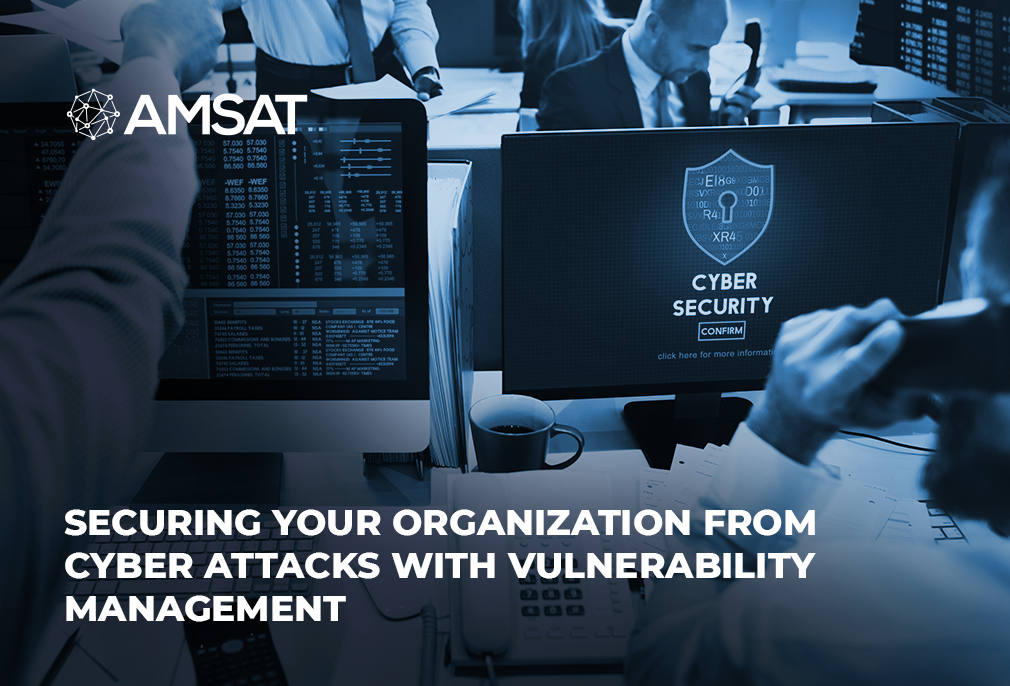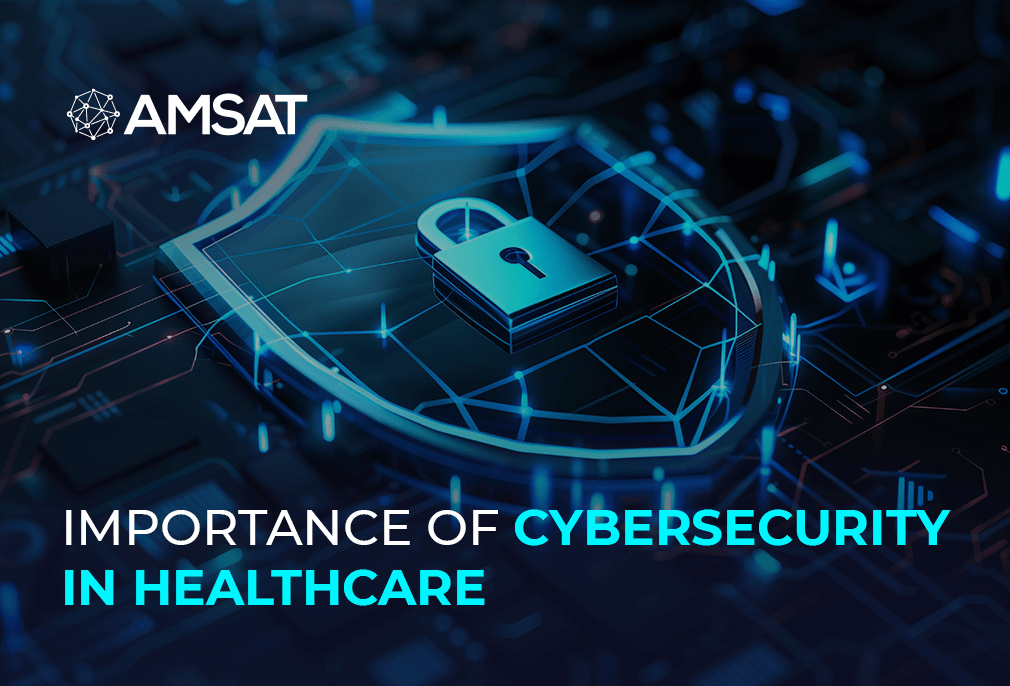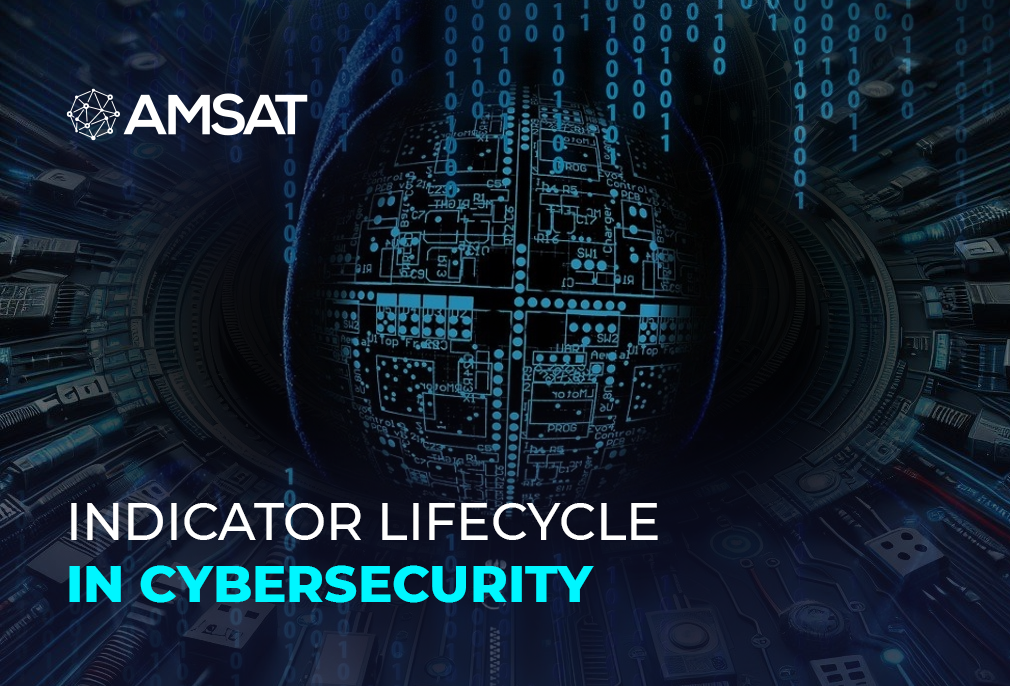Latest Blogs

By AMSAT July 19,2023
Securing Your Organization from Cyber Attacks with Vulnerability Management
Introduction
Cybersecurity is a matter of life and death for business of all sizes—no doubt about that. In today’s rapidly evolving technology landscape, the threat of cyberattacks always lingers, with malicious actors constantly finding innovative ways to launch attacks for various ulterior motives, especially financial gain. Companies should, therefore, exercise extreme caution in operational management and avoid any vulnerabilities in their systems as even a single loophole can be exploited to infiltrate networks, steal sensitive data, or disrupt services.
That’s why vulnerability management is so important. It is the process of identifying, assessing, and remediating vulnerabilities in an organization’s systems and applications. A good vulnerability management program can help to protect an organization from a wide range of threats, including:
Data breaches: Hackers can use vulnerabilities to steal sensitive data, such as customer PII, financial information, or intellectual property.
DDoS attacks: Hackers can use vulnerabilities to launch denial-of-service attacks, which can disrupt or even disable an organization’s website or network.
Ransomware attacks: Hackers can use vulnerabilities to encrypt an organization’s data and demand a ransom payment to decrypt it.
Vulnerability management is not a one-time task. It is an ongoing process that must be repeated regularly to ensure that an organization’s security posture is up-to-date. By implementing a comprehensive vulnerability management program, businesses can help to protect themselves from the ever-evolving cyber threat landscape.
In this blog post, we’ll discuss the importance of vulnerability management and how to implement a successful program. We’ll also provide some tips on how to stay ahead of the hackers.
Why is vulnerability management important?
There are many reasons why vulnerability management is important. Here are just a few:
To protect your sensitive data. Hackers are constantly looking for ways to steal your data. By identifying and mitigating vulnerabilities, you can make it more difficult for them to succeed.
To comply with regulations. Many regulations, such as PCI DSS and HIPAA, require businesses to have a vulnerability management program in place.
To reduce your risk of a cyberattack. A cyberattack can be costly and disruptive. By having a strong vulnerability management program in place, you can reduce your risk of being attacked.
How to implement a successful vulnerability management program
There are a few key steps involved in implementing a successful vulnerability management program. These include:
Identifying vulnerabilities. The first step is to identify the vulnerabilities in your IT systems. This can be done by using vulnerability scanning tools.
Prioritizing vulnerabilities. Once you’ve identified the vulnerabilities, you need to prioritize them. This means determining which vulnerabilities are the most critical and need to be addressed first.
Remediating vulnerabilities. The next step is to remediate the vulnerabilities. This means fixing the flaws that are causing the vulnerabilities.
Verifying and reporting. Once the vulnerabilities have been remediated, you need to verify that they have been fixed. You also need to report on the results of your vulnerability management program.
Tips for staying ahead of the hackers
In addition to implementing a strong vulnerability management program, there are a few other things you can do to stay ahead of the hackers. These include:
Keeping your software up to date. Software updates often include security patches that can help to mitigate vulnerabilities.
Educating your employees about cybersecurity. Your employees are the first line of defense against cyberattacks. Make sure they are aware of the risks and how to protect themselves.
Using security best practices. There are a number of security best practices that you can implement to help protect your systems. These include using strong passwords, implementing multi-factor authentication, and encrypting your data.
Conclusion
In today’s fast-paced digital ecosystem, vulnerability management is an important part of cybersecurity. By putting in place a reinforced vulnerability management program—including locating vulnerabilities, ranking them, fixing the problems, and verifying the fixes—companies may secure their sensitive data, stick to rules, and minimize the likelihood of cyberattacks. It’s critical to maintain update software, educate staff about cybersecurity, and apply security best practices to stay one step ahead of the evolving threats—and hackers. Businesses can improve their security posture and reduce the constantly changing threats by implementing a layered security approach.
Don’t wait to start protecting your systems. Get in touch with us and start implementing a vulnerability management program today.
TAGS
- Cyber Crime
- vulnerability management
Recent Blogs
Ready to Get Started?
Our specialists are ready to tailor our security service solutions to fit the needs of your organization.










